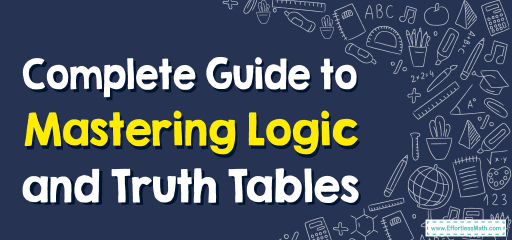
Welcome to the fascinating world of logic and truth tables! As you delve into the depths of geometry and mathematical reasoning, understanding the foundation of logical statements becomes crucial. Truth tables, in particular, are an invaluable tool to visualize and understand how different logical combinations play out. In this comprehensive guide, we'll walk through the basics of logic and truth tables, ensuring you grasp the core concepts with ease. So, let's dive in!

Constructing a Truth Table
A truth table lists all possible truth values for a given logical statement or compound statement. It provides a systematic way to evaluate the truth or falsity of a statement based on the truth values of its components.
Here’s how to construct one:
Example 1:
Construct the truth table for the logical statement \( p \lor \neg p \):
| \( p \) | \( \neg p \) | \( p \lor \neg p \) |
|---|---|---|
| T | F | T |
| F | T | T |
This table shows that \( p \lor \neg p \) is always true, which makes it a tautology.
Example 2:
Construct the truth table for the conditional statement \( p \rightarrow q \):
| \( p \) | \( q \) | \( p \rightarrow q \) |
|---|---|---|
| T | T | T |
| T | F | F |
| F | T | T |
| F | F | T |
Note that the only time the conditional statement is false is when \( p \) is true and \( q \) is false.
Answers:
| \( p \) | \( q \) | \( \neg p \land q \) |
|---|---|---|
| T | T | F |
| T | F | F |
| F | T | T |
| F | F | F |
| \( p \) | \( q \) | \( p \leftrightarrow q \) |
|---|---|---|
| T | T | T |
| T | F | F |
| F | T | F |
| F | F | T |